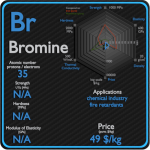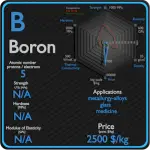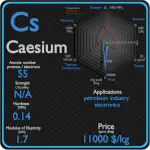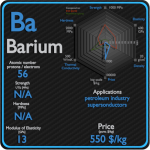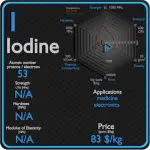This article contains comparison of key thermal and atomic properties of magnesium and chlorine, two comparable chemical elements from the periodic table. It also contains basic descriptions and applications of both elements. Magnesium vs Chlorine.
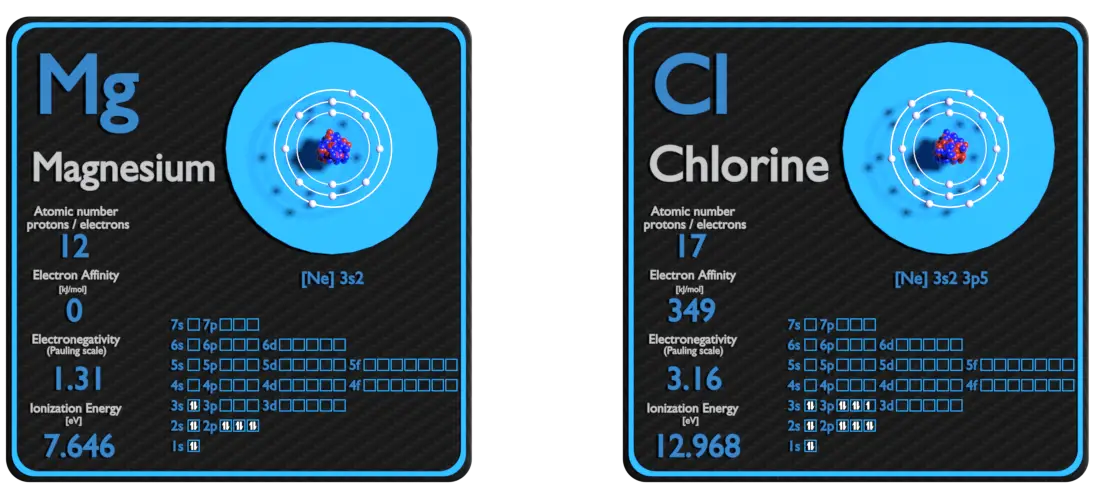
Magnesium and Chlorine – About Elements
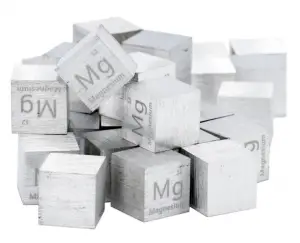

Source: www.luciteria.com
Magnesium and Chlorine – Applications
Magnesium
Magnesium is the third-most-commonly-used structural metal, following iron and aluminium.[35] The main applications of magnesium are, in order: aluminium alloys, die-casting (alloyed with zinc), removing sulfur in the production of iron and steel, and the production of titanium in the Kroll process. Magnesium alloys are used in a wide variety of structural and nonstructural applications. Structural applications include automotive, industrial, materials-handling, commercial, and aerospace equipment. Magnesium alloys are used for parts that operate at high speeds and thus must be light weight to minimize inertial forces. Commercial applications include hand-held tools, laptops, luggage, and ladders, automobiles (e.g., steering wheels and columns, seat frames, transmission cases). Magnox (alloy), whose name is an abbreviation for “magnesium non-oxidizing”, is 99% magnesium and 1% aluminum, and is used in the cladding of fuel rods in magnox nuclear power reactors.
Chlorine
Chlorine is used in the manufacture of a wide range of consumer products, about two-thirds of them organic chemicals such as polyvinyl chloride (PVC), many intermediates for the production of plastics, and other end products which do not contain the element. As a common disinfectant, elemental chlorine and chlorine-generating compounds are used more directly in swimming pools to keep them sanitary. While perhaps best known for its role in providing clean drinking water, chlorine chemistry also helps provide energy-efficient building materials, electronics, fiber optics, solar energy cells, 93 percent of life-saving pharmaceuticals, 86 percent of crop protection compounds, medical plastics, and much more.
Magnesium and Chlorine – Comparison in Table
| Element | Magnesium | Chlorine |
| Density | 1.738 g/cm3 | 0.0032 g/cm3 |
| Ultimate Tensile Strength | 200 MPa | N/A |
| Yield Strength | N/A | N/A |
| Young’s Modulus of Elasticity | 45 GPa | N/A |
| Mohs Scale | 2.5 | N/A |
| Brinell Hardness | 260 MPa | N/A |
| Vickers Hardness | N/A | N/A |
| Melting Point | 649 °C | -101 °C |
| Boiling Point | 1090 °C | -34.6 °C |
| Thermal Conductivity | 156 W/mK | 0.0089 W/mK |
| Thermal Expansion Coefficient | 24.8 µm/mK | N/A |
| Specific Heat | 1.02 J/g K | 0.48 J/g K |
| Heat of Fusion | 8.954 kJ/mol | 3.23 kJ/mol |
| Heat of Vaporization | 127.4 kJ/mol | 10.2 kJ/mol |








